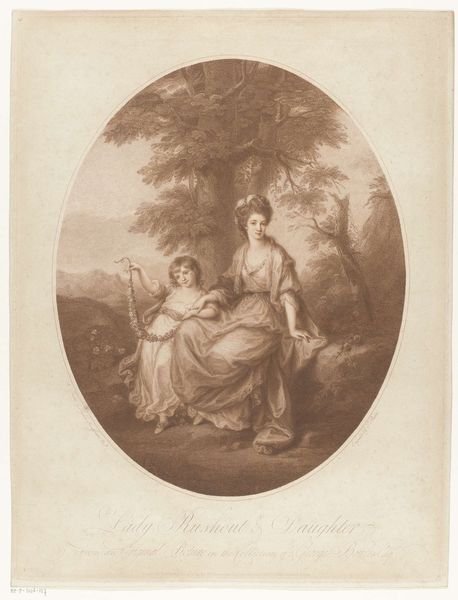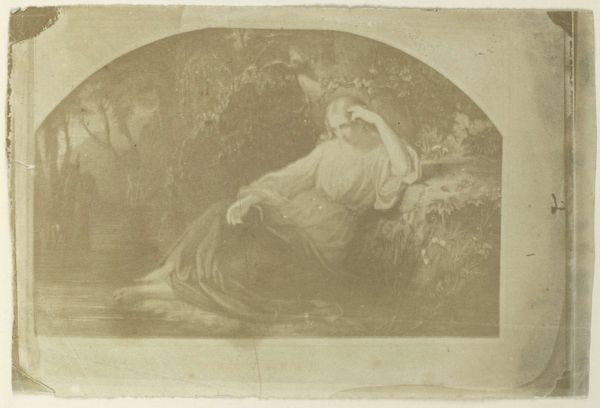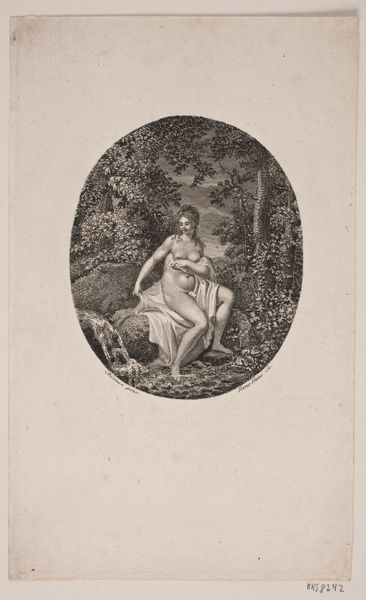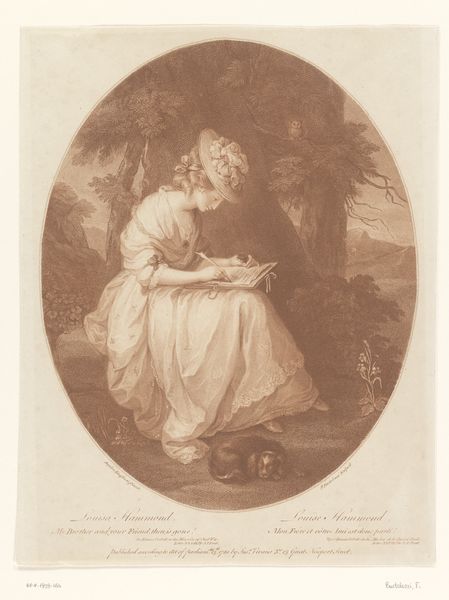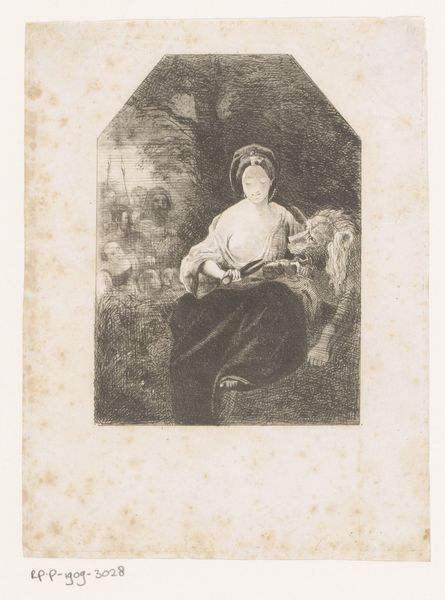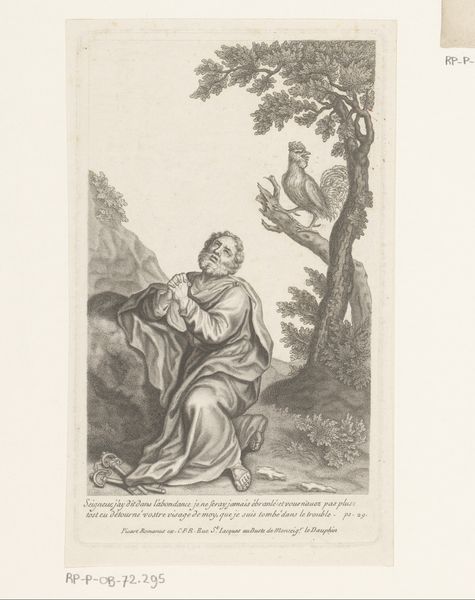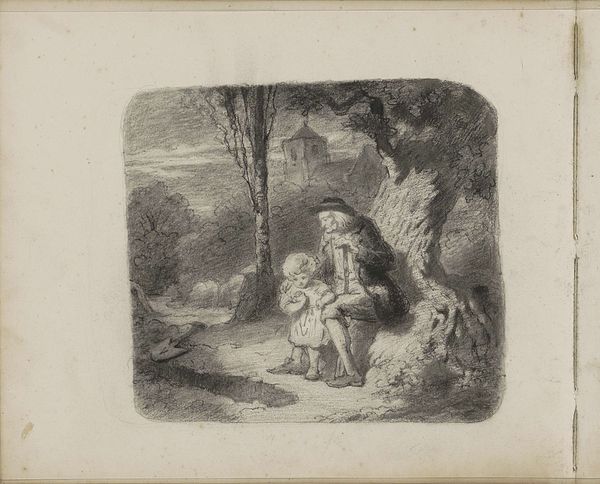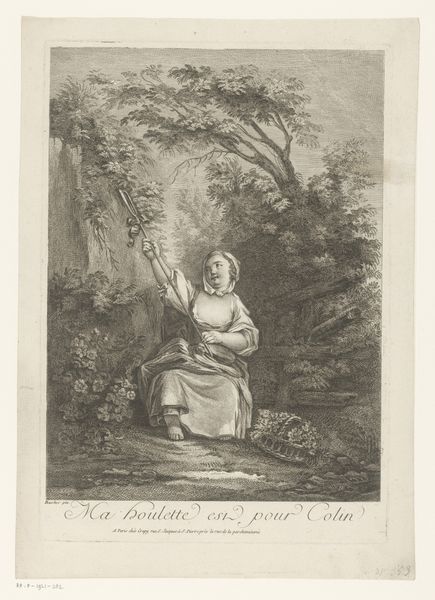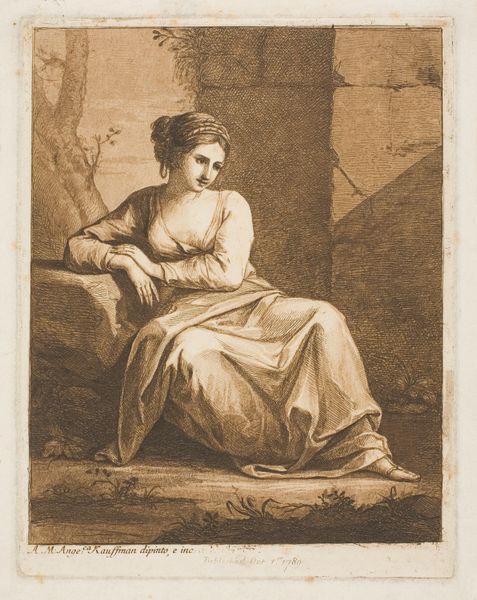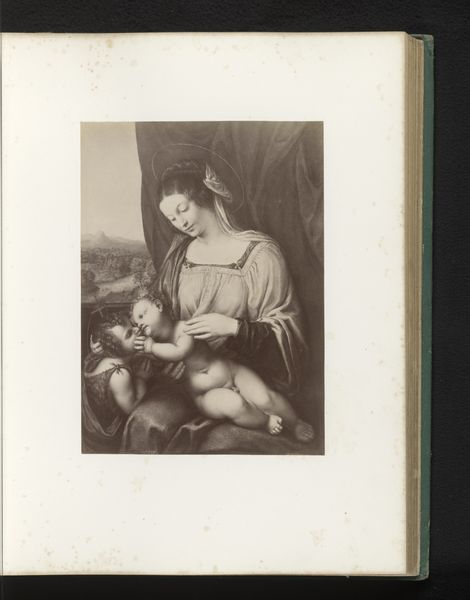
Dimensions: height 380 mm, width 29 mm
Copyright: Rijks Museum: Open Domain
Editor: This is Francesco Bartolozzi's "Griselda," an engraving from possibly 1784. The woman is set in a pastoral scene, and the oval frame almost feels like a cameo. What is your interpretation of the composition? Curator: The structure is immediately evident: the careful placement of the figure within the oval, framed by both the natural landscape and the imposed geometry. Note how the tonal variations—achieved through engraving—create depth. The foreground's darkness pushes the figure forward. It directs our gaze. How does the pose strike you? Editor: It feels relaxed, almost serene, but the spindle also suggests labour, a juxtaposition. Is that contrast significant? Curator: Indeed. The line, the fundamental element, is exquisitely controlled, creating both delicate texture and firm definition. Examine the drapery; consider how its rendering contributes to the overall aesthetic. The background elements do more than locate the scene. The light and shadow enhance this form. It contributes to our understanding. Are you picking up on anything symbolic in this piece? Editor: Only that the scene is contained within an oval. That limitation seems very specific. Curator: A point well taken. Such artifice draws our attention to the act of representation itself. We are made acutely aware of the artist's deliberate construction of this reality. Bartolozzi masterfully manipulates line and tone to achieve a Neoclassical ideal within the Romantic period. What do you take away from this now? Editor: Now I appreciate how every element contributes to a very intentional viewing experience. Curator: Precisely, we're invited to analyze rather than simply observe.
Comments
No comments
Be the first to comment and join the conversation on the ultimate creative platform.
